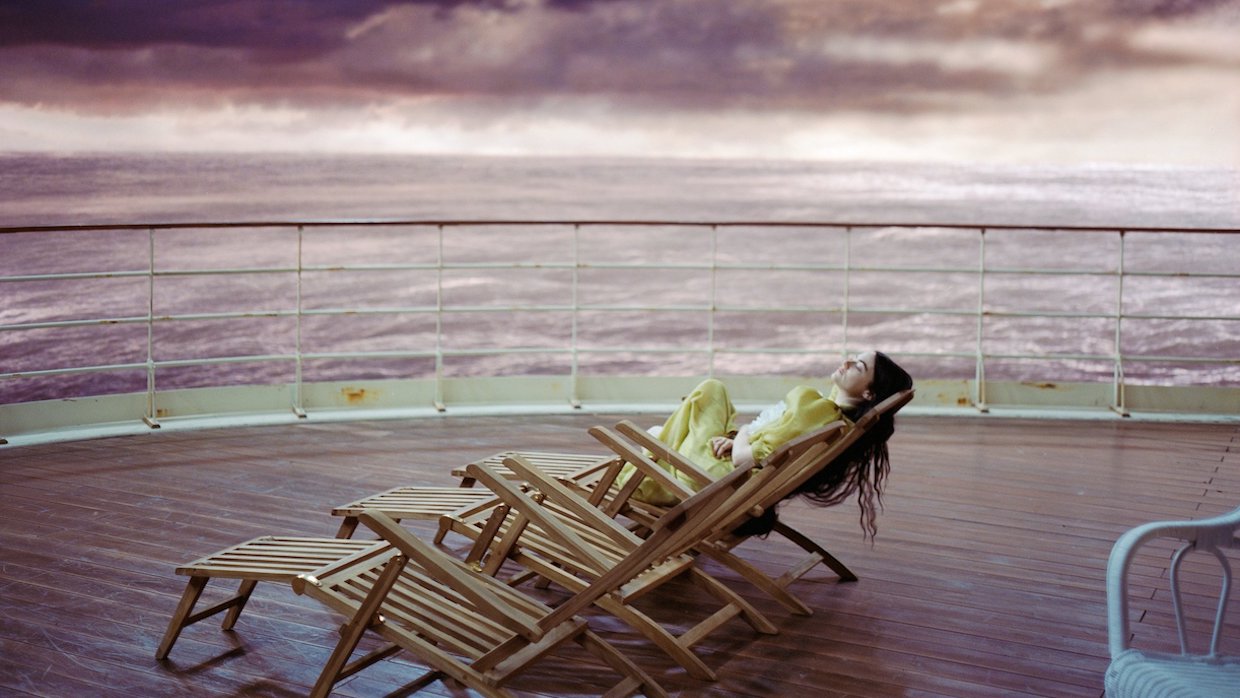 Back to selection
Back to selection
Venice Film Festival 2023: Poor Things
 Emma Stone in Poor Things
Emma Stone in Poor Things Initially, Poor Things seems like it might be a Yorgos Lanthimos provocation about the value of provocation, a suspicion prompted when medical student Max McCandless (Ramy Youssef) first sees Bella Baxter (Emma Stone) and, awestruck, describes her as a “very pretty retard.” Given the film’s steampunk trappings, the 19th-century setting doesn’t offer “period verisimilitude” as a cover for vocabulary that feels suspiciously like a Red Scare shout-out. Bella is seen naked for the first time while unconscious; depending on how you want to take this visual language, the viewer could be aligned with a non-consensual gaze. Learning through transgression turns out to be one of the film’s throughlines, as Bella goes on a journey of sexual self-discovery (a la Candy) in which degradation is part of the learning curve. How can we grow if we’re not OK with potentially being offended? And so on.
But rhetorically checkmating keyboard warriors isn’t Poor Things‘ primary agenda, which is issuing a statement against the patriarchy and rape culture (cheers, supportive applause) via Bella’s intellectual and allegorical coming-of-age. She begins as the cloistered ward of Dr. Godwin Baxter (Willem Dafoe) before setting out to explore the world; men introduce Bella to empirical scientific methods and nihilism, while women initiate her into sex work and socialism. There is no absolutely no subtext to Poor Things‘s presentation of men who are scared of women’s sexual agency, down to the explicitly articulated threat of female circumcision. Given the global resurgence of virulently reactionary right-wing movements, theoretically this isn’t entirely an exercise in audience self-congratulation for endorsing what should be basic convictions (resolved: we are for sexual autonomy and against sexual assault)—but it sure feels like one, and it’s not like this is destined for the Sound of Freedom crowd anyway, so I think it’s safe to label Poor Things a “liberal echo chamber” movie.
I haven’t read Alasdair Gray’s work, but a quick skim of the relevant wikis suggests his source novel is a good deal more structurally complicated than what’s on display here, and that his work is often concerned with Scottish identity (hence the heavy accent Dafoe wields, which is otherwise inexplicable); this adaptation’s girlboss focus seems imposed by screenwriter Tony McNamara. Blunt simplicity is in keeping with his sense of comedy, in which—as demonstrated in McNamara’s previous collaboration with Lanthimos, The Favourite, and reiterated without development here—a lot is staked on the presumptive hilarity of period vocabulary being punctuated by “fuck” and other indecorous anachronisms. Further giving the people what they’ve already proven they want, Poor Things restages The Favourite‘s big dance scene, once again offering up viral-ready dance moves on the period floor; it’s weird to watch a (formerly?) arthouse filmmaker sequelize their most-widely-seen sequence to date with essentially no development.
Directors theoretically work through their influences, becoming less overtly derivative and more themselves over time; in his most perverse gesture, Lanthimos has chosen to go the opposite way, leaning harder into Kubrick fetishism to increasingly baffling effect. Where Dogtooth effectively created a novel language for both the unexpected use of offscreen space and the one-set movie, with The Lobster Lanthimos started to lean into his influence (singular) more; maybe the desire to scale up was motivated primarily by the wish to be able to afford pastiche via expensive lenses. With its endless fisheye Steadicams roaming through a large estate, The Favourite cosplayed The Shining to an embarrassing extent; here, Lanthimos eventually restages A Clockwork Orange‘s Milk Bar floor to purely distracting results.
Initially, Poor Things presents as somewhat visually original, because its first act (45 minutes or so) is largely in black-and-white, often captured via pinhole cameras whose output occupies a tiny part of the screen, making for an aggressive and arresting hazing of the image. Lanthimos shot on 35mm, but I’m not entirely sure why he bothered, given both the tininess of the first act images and how much of what follows occurs against fully CG-created sets. (The shift from black-and-white to color is clearly modeled on The Wizard of Oz, which seems stupid.) There’s novelty in watching Lanthimos graduate to a CG-heavy production; Bella’s European sojourn takes place amidst Hungarian set builds and a lot of computer animated assistance which calls attention to its overt artifice. Lanthimos’s approach is neither particularly pleasant nor hideous to look at; it’s not, as many surmised from the trailer, “Burton-esque” and is its own thing. And while there’s a certain novelty interest in watching the formerly real-locations-based director tackle what’s essentially a new and more expensive medium—a kind of medium-budget variant of the indies-to-MCU trajectory—it also doesn’t suggest that he should move into production design. The end credits are the first time the 35mm makes sense, with titles over sketches and paintings (presumably concept art for the sets); the grain is perceptible, the shots devoid of people, a semi-severe gesture at odds with the entirety of the rest of the film.
